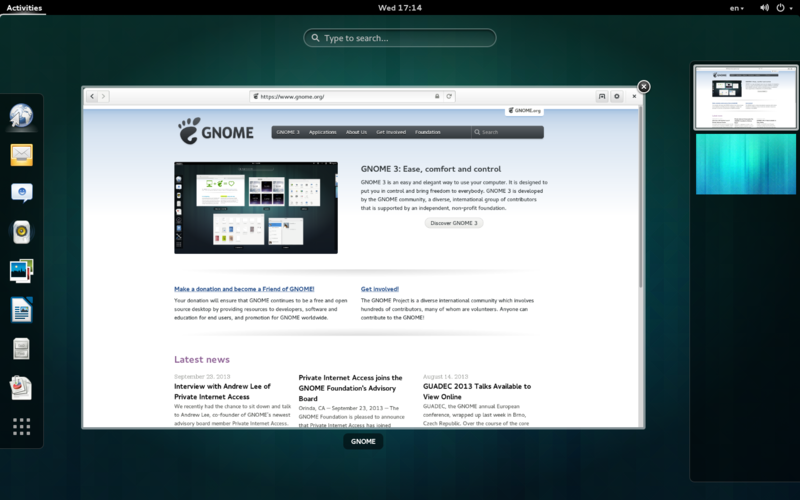

The Executive Director of the GNOME Foundation recently spoke in an interview [1] with Andrew Gregory and Graham Morrison of Tux Radar. The GNOME desktop is finding more acceptance from users [2] and from developers [3,4] and as GNOME 3.10 comes near [5,6] with new changes and applications [7,8] it seems clear that GNOME's future -- just like KDE's -- is secured.
Andrew Gregory and Graham Morrison talk to Karen Sandler, Executive Director of the Gnome Foundation, and hear some rather more compelling arguments for software freedom than clever acronyms and numbering systems that start at 0 rather than 1.
Since its inception not long ago, the new GNOME 3.x series has confused some and frustrated others, but more often than not, it has also managed to conquer those few who actually got past the initial quirks and gave it a fair chance. Similarly, its desktop environment, simply dubbed Shell, left a lot to be desired in the early days, mostly because the customization options had been thrown out the window in favor of a to-the-point approach which meant to remove distractions. Unfortunately, such approach was certainly too closed to survive in the Linux realm.
With another day comes more improvements to the Linux desktop running atop Wayland. While yesterday saw Enlightenment on Wayland work, today already is some GNOME Wayland activity ahead of the GNOME 3.10 release in just a few weeks time.
In GNOME Software, we show a list of applications for each category that we think are frikin’ awesome. Some have AppData, and some don’t. For the ones that don’t yet have AppData it leaves the responsibility of writing the long description to the Linux community, where we can push the data back to upstream so that all the distributions can benefit. So far we’ve had a superb reaction from lots of upstream projects.
The open-source GNOME desktop is one of the primary desktops in use on Linux operating systems today. The GNOME 3.10 desktop, which was officially released Sept. 25, provides users with a number of user interface enhancements as well as new applications and under-the-hood improvements for developers. In total, more than 30,000 changes were made in GNOME 3.10, with over 1,000 individuals contributing to the new release. On the user interface front, there is a new system status area that provides a more unified view of the user's system. In terms of new software applications, the GNOME 3.10 release starts right at the beginning with a new "Software" application to help users to explore and find new software. As part of the release, GNOME developers have also introduced a new "Maps" application that pulls data from the open-source OpenStreetMap project. Plus, there is a new Web browser aptly named "Web" that advances GNOME's browser technology, formerly known as Epiphany. In this slide show, eWEEK takes a look at what is new and what is improved in the open-source GNOME 3.10 desktop.
As usual, Fedora tracks GNOME releases closely. Last week, Fedora 20 Alpha shipped with a GNOME 3.10 prerelease, and today have just landed the final 3.10.0 builds, one day after the official upstream release.
This week prior to the GNOME 3.10 release also marked the release of GNOME-Panel 3.8 and GNOME-Flashback-Session 3.8. The "GNOME Flashback" project is about revitalizing the GNOME 3 "fallback" session experience found in earlier 3.x releases for cases where no 3D hardware acceleration was available.
There's a new GNOME application that experienced its first release this morning: GNOME Logs. While there's a lot of work left on the project, GNOME Logs is to serve as a centralized log viewer for the systemd journal on the GNOME desktop.
The GNOME Logs program is a utility displaying detailed system event information that can be filtered, searched, and further analyzed in the investigation of system problems.